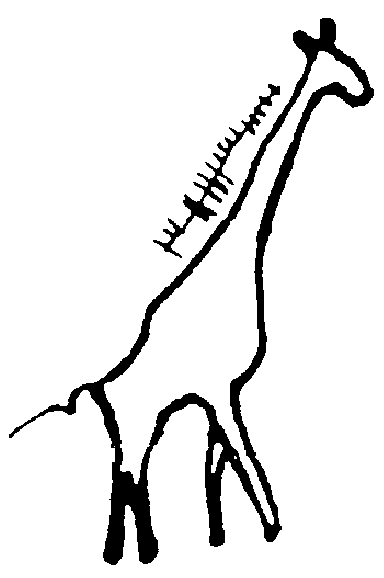 |
Science Frontiers ONLINE No. 60: Nov-Dec1988 |
|
|
Ogam, ogam, everywhere
 Ogam is a curious sort of writing characterized by a long reference line decorated with shorter perpendicular or slanted lines. The lengths and arrangements of the shorter lines and their crossings and non-crossings of the reference line constitute alphabetical symbols. The ancient Irish are credited with inventing Ogam; and Ogam inscriptions are common in that part of the world.
Ogam is a curious sort of writing characterized by a long reference line decorated with shorter perpendicular or slanted lines. The lengths and arrangements of the shorter lines and their crossings and non-crossings of the reference line constitute alphabetical symbols. The ancient Irish are credited with inventing Ogam; and Ogam inscriptions are common in that part of the world.
During the last two decades, B. Fell and members of the Epigraphic Society have discovered many possible Ogam inscriptions in the continental United States. In fact, the latest issue of the NEARA Journal (NEARA = New England Antiquities Research Association) contains two articles dealing with supposed Ogam writing and other crude drawings in the Anubis Caves of western Oklahoma. The presence of true Ogam writing in Oklahoma would be traumatic for mainstream American archeology, for it would imply that far-wandering Celts had passed through long before Columbus made landfall.
Later in the same issue of the NEARA J., G. Carter describes a tablet in the possession of a South African Zulu, which pictures a giraffe and a zebra along with inscriptions in Egyotian, Arabic, and Ogam! Carter writes:
"I put below of picture of a giraffe with Ogam alongside. The Ogam letters are RZRF. Add vowels and this becomes: Rai Za Ra Fa; old Arabic for 'behold the giraffe.' Alongside a zebra figure one finds Ogam letters ZBDB, which in Arabic reads 'painted ass.' These animal figures are usually considered to date to the Upper Paleolithic. Apparently Arabic speakers added the inscriptions much later. But when, pray, did the Arabs write in Ogam?
Those Celts certainly did get around! Has anyone found Ogam in South America or Australia?
(Leonard, Phillip M., and McGlone, William R.; "The Anubis Caves," NEARA Journal, 22:51, 1988. Carter, George F.; "Before Columbus," NEARA Journal, 22:61, 1988.)
Reference. Details on Ogam and its presence in unexpected places can be found in our handbook Ancient Man. Ordering information here.